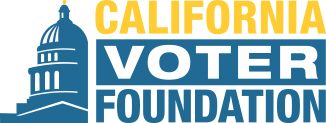Excerpts:
It’s going to be a record year for voting by mail in the U.S. election and that has raised security concerns about each step of the process.
But election officials say they have systems in place to make voting by mail a success even as health concerns about voting during the COVID-19 pandemic is pushing states to expand their current vote-by-mail options.
“Somewhere between 90 million and 105 million ballots might come through the mail,” said Eddie Perez, global director of technology development at the OSET Institute, a nonprofit election technology organization. “If what we're seeing in other primary elections is any guide, it's probably safe to estimate that somewhere between 65% and 75% of all ballots cast in the November election might come by mail.”
“That's a very, very significant volume of mail,” he added.
To get an idea of how significant, the share of voters who cast ballots via mail-in methods increased nearly threefold between 1996 and 2016 – from 7.8% to nearly 21%, according to a Pew Research Center analysis of the Census Bureau’s voter supplement data. Of course, the total number of voters in each election wasn’t the same, and isn’t known for 2020, so the comparison is imprecise. But the leap from nearly 21% to 75% or even 65% of all votes coming by mail is significant.
- - - - - - - -
Common problems with mail-in ballots include those mailed too late, voters failing to sign ballot envelopes and voters’ signatures not matching the ones the county has on file.
Reforms around the country have addressed these problems. This year, California has extended the window for when mail ballots need to arrive to be counted: 17 days after Election Day. If there is a problem with a ballot, such as problem matching the ballot’s signature with the one on file, counties must contact voters to see if they can fix the problem.
But even with those reforms, Kim Alexander, president and founder of the California Voter Foundation, said she worries about one group – young and new voters.
“They have three strikes against them,” she said. “They are unfamiliar with voting. They are not very familiar with how the U.S. Postal Service works. And they're not used to making a signature. They don't write checks. They don't sign checks. So you put all those three together, and it means we have a lot of outreach and education work.”
That’s what election officials are doing now, racing the clock, checking voter registrations, sending mailers to get the word out about how to vote by mail.
Not everything will go smoothly, they say, and the public may have to be patient. Election results may not be known for weeks, perhaps not until early December. (Full Story)

